mushroom library nods to the region’s native fungi
Sited on a narrow rocky plot between two traditional dwellings and shaded by an ancient raisin tree, the Mushroom Library for Children in Yunnan, China, is conceived as a reading space bringing together children of multiple ethnicities in Yunnan, China. Kong Xiangwei Studio’s design responds to tight spatial constraints and the imperative of preserving the tree, leading to an adaptive, almost improvisational construction approach. A collaboration with local artisans led to the creation of a lightweight steel framework, where 12 milimeter ribbed steel bars form arching supports that branch outward like organic extensions of the tree canopy. This skeletal structure merges with cast-in-place concrete vaults, eschewing conventional thatch-and-earth techniques for greater durability while retaining an elemental, shelter-like quality. With a mushroom-shaped roof — a nod to the region’s native fungi — its structure morphs depending on one’s vantage point: from the alley, it resembles the brim of a hat; from above, a whimsical, almost animate form emerges.

all images courtesy of Kong Xiangwei Studio
Kong Xiangwei Studio embraces local craftsmanship
Kong Xiangwei Studio’s material palette further embraces imperfection. Ordinary concrete, left unpolished, celebrates the craftsmanship of rural builders, and the rugged tactility of the surfaces ensures that the book house does not impose itself as an alien form but instead folds into the village’s vernacular language. Daylight orchestrates and interplay with the surfaces’ rugged tactility. Openings in the Mushroom Library for Children’s structure, including preserved tree hollows, a central oculus, and stair voids, allow sunlight to filter through, casting ephemeral shadows that shift with the hours. Arched steel columns mimic dendritic forms, while semi-spherical bookshelves, crafted from fine steel rods and wrapped in translucent, color-saturated acrylic panels, refract light into delicate chromatic patterns, lending an ethereal quality to the interior.
An open layout encourages fluid movement, with ascending pathways leading to a rooftop terrace where children interact with the tree’s branches, harvest its fruit, or gaze outward at the vast forested horizon. By night, the softly glowing structure becomes an emblematic presence, floating above the village like a lantern or a low-hovering celestial body.
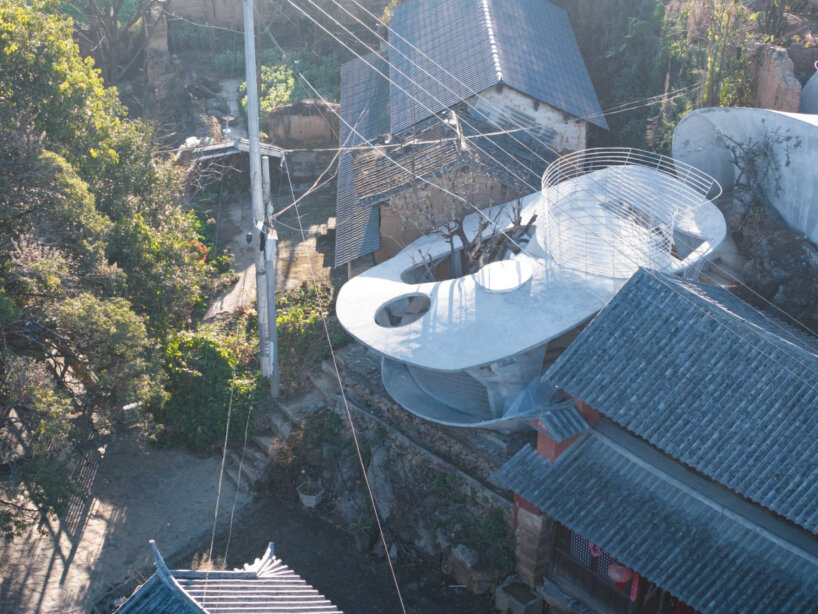


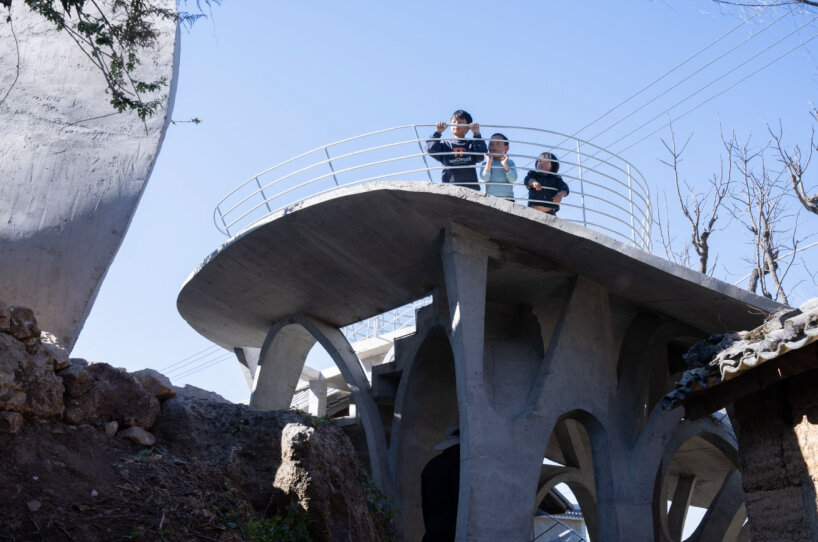
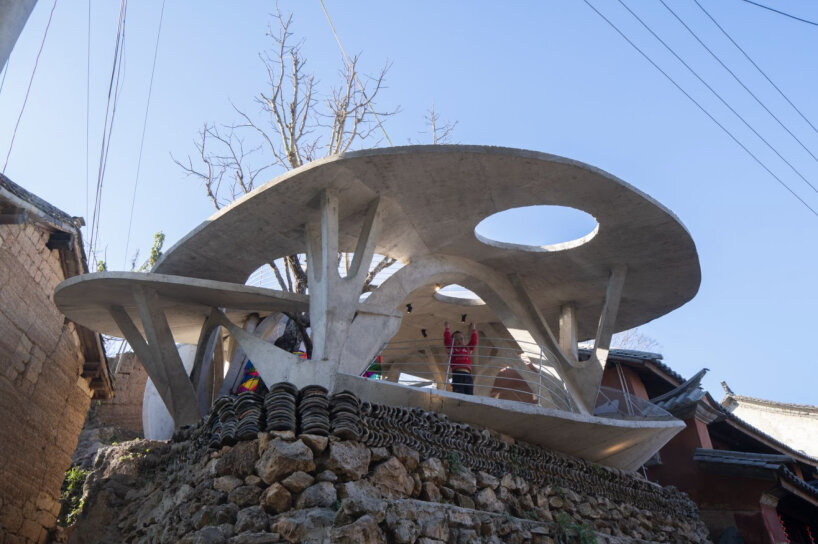
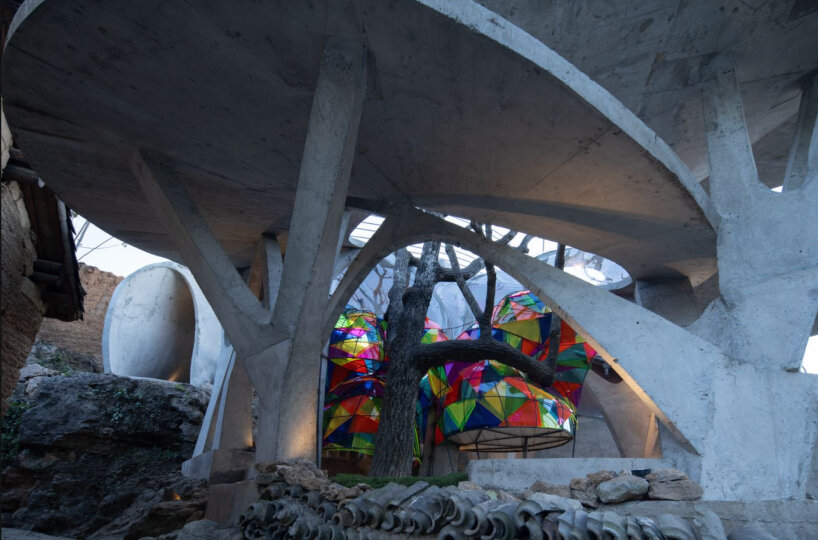
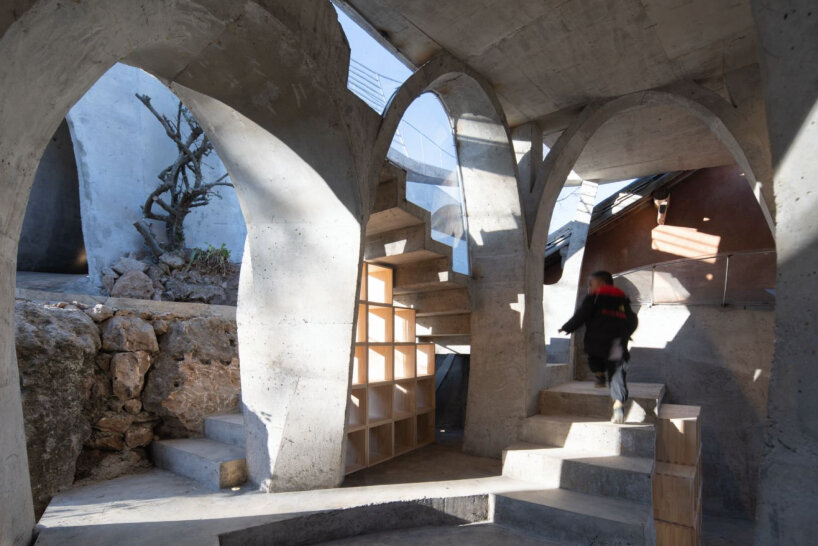
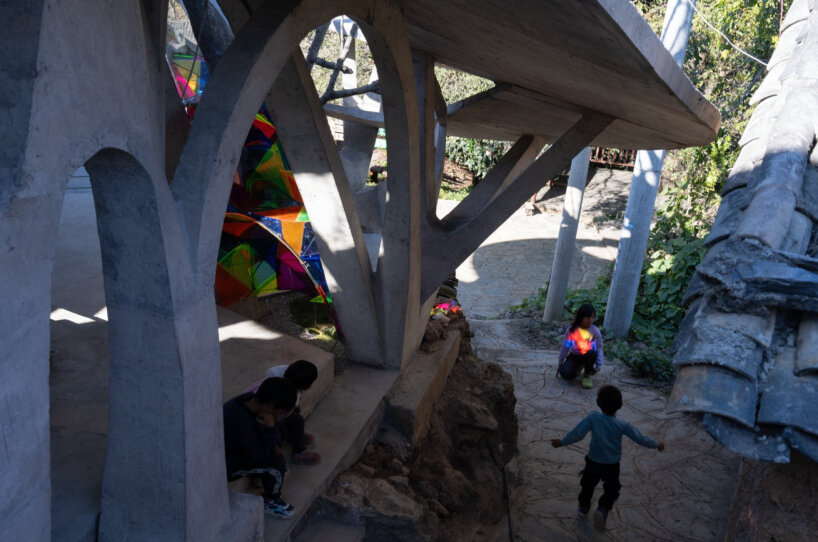
project info:
name: Mushroom Library for Children
architect: Kong Xiangwei Studio
location: China